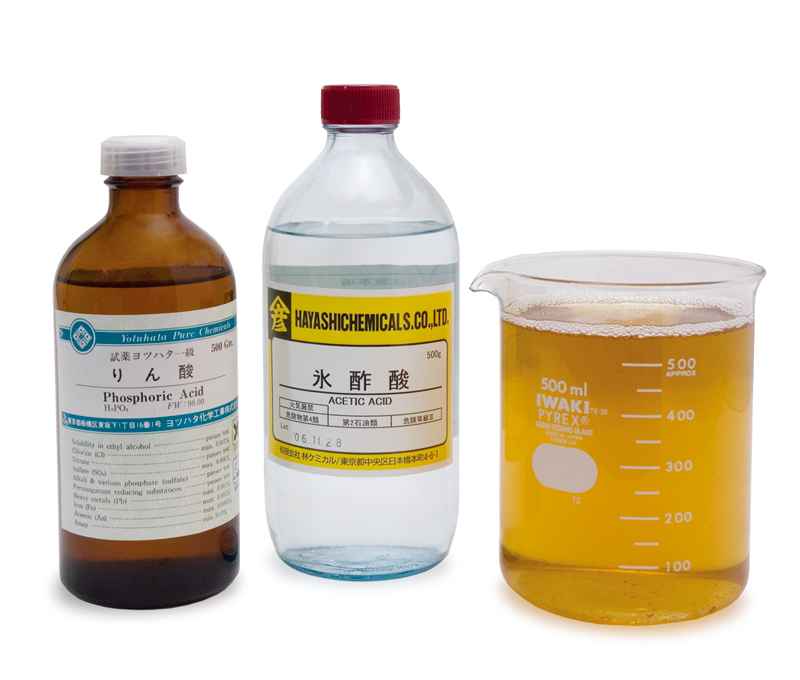Platemaking Solution
製版液
Seihan-eki
CATEGORIES
Platemaking solution desensitizes the non-plotting areas when producing a lithograph with a metal plate. It is a mixture of phosphoric acid and glacial acetic acid added to a gum Arabic solution and is also called gum etch solution.
Lithographic printing uses the mutually repelling properties of water and oil, and the platemaking chemically and physically creates hydrophilic areas and lipophilic areas. Platemaking solution creates an oxide film on the non-plotting areas, giving them hydrophilic properties.
After drawing, the plate surface is coated evenly with platemaking solution with a brush or sponge. A thick coating will prevent depletion in the drawing areas in later processes. If applied too thinly, it will cause the plate to crack and soil. It should also be noted that on blocks where tusche is used, applying the solution can dissolve the tusche. Platemaking solution works best when dry and, therefore, it is better to wait until it is completely dry before using the plate.
The level of acidic concentration in the solution is adjusted to allow for the condition of the drawing and the temperature. As a general rule, 1% to 2% of phosphoric acid and 0.1% to 0.2% of glacial acetic acid is mixed with 100 parts of gum Arabic (formula used by Shohachi SHIMIZU, Musashino Art University). It is important to note that, when making up the solution, a high concentration of phosphoric acid will corrode the drawing areas and fade the drawing. Etch solution added to gum Arabic as well as commercially available pre-mixed SK solution, etc. can also be used as an alternative to the formula above.
Platemaking solution should be mixed in a well-ventilated area.
Gum Arabic can be purchased at general art stores and phosphoric acid and glacial acetic acid can be purchased at pharmacies.

